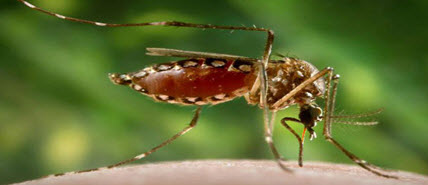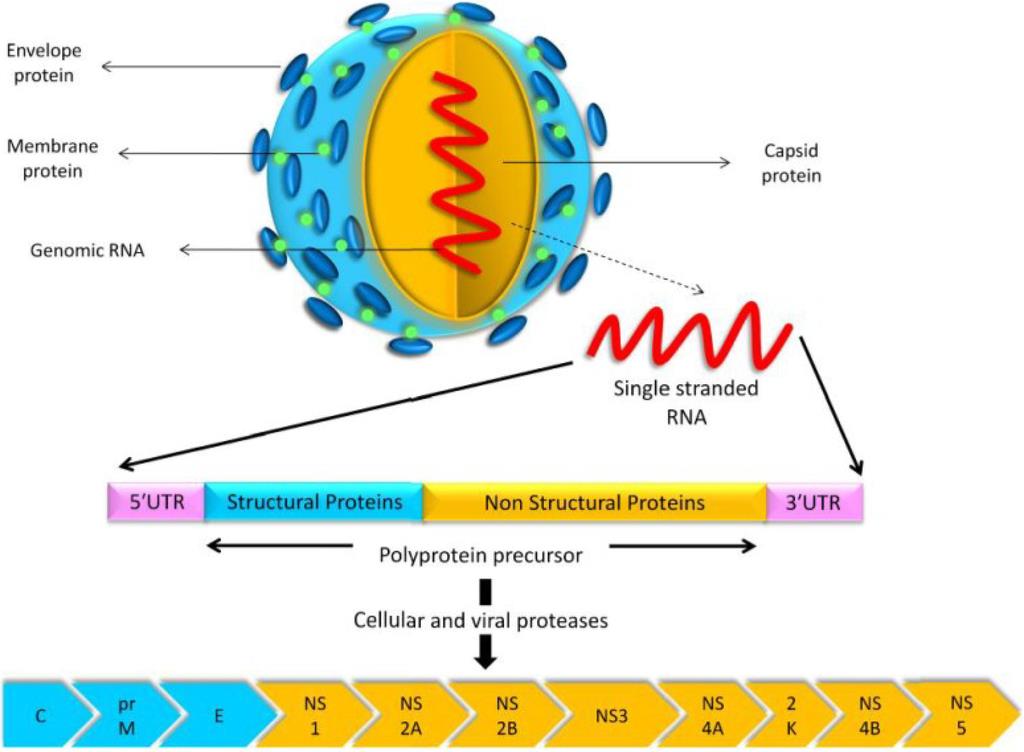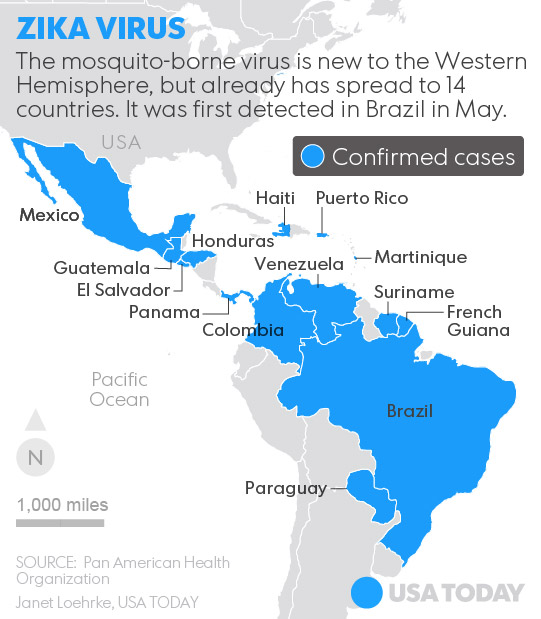{ DOWNLOAD AS PDF }
ABOUT AUTHORS
M .Manasa Rekha1*, A. Bharath Kumar1, T.Mubeena1, C. Gopinath2
1Department of Pharmacy Practice,
Annamacharya college of Pharmacy, Rajampet, Andhra Pradesh, India.
2Department of Phytopharmaceuticals and Pharmacognosy,
Annamacharya college of Pharmacy, Rajampet, Andhra Pradesh, India.
manasarekharoyal@gmail.com
Zika virus(ZIKV) is a member of the virus family Flaviviridae and the genus Flavivirus and It is transmitted Aedes mosquitoes like A. aegypti and A. albopictus,which are active at day times[1,2].
REFERENCE ID: PHARMATUTOR-ART-2421
|
PharmaTutor (Print-ISSN: 2394 - 6679; e-ISSN: 2347 - 7881) Volume 4, Issue 7 Received On: 18/02/2016; Accepted On: 04/03/2016; Published On: 01/07/2016 How to cite this article: Rekha MM, Kumar AB, Mubeena T, Gopinath C; A short review on Zika Virus past, present strategies and future prospectives; PharmaTutor; 2016; 4(7); 21-24 |

Fig 1: Diagram represents the mosquito Aedes egyptii [1].
Structure of zika virus:
Zika virus is enveloped and icosahedral and has a nonsegmented, single-stranded, positive-sense RNA genome. It is most closely related to the Spondweni virus[1,2]. The Zika virus is a positive sense single-stranded RNA molecule 10794 bases long [2] with two non-coding regions flanking regions known as the 5' NCR and the 3' NCR. The open reading frame of the Zika virus reads as follows: 5′-C-prM-E-NS1-NS2A-NS2B-NS3-NS4A-NS4B-N?S5-3′ and codes for a polyprotein that is subsequently cleaved into capsid (C), precursor membrane (prM), envelope (E), and non-structural proteins (NS). [5] The E protein composes the majority of the virion surface and is involved with aspects of replication such as host cell binding and membrane fusion. [2] NS1, NS3, and NS5 are large, highly-conserved proteins while the NS2A, NS2B, NS4A, and NS4B proteins are smaller, hydrophobic proteins. [5] Located in the 3' NCR are 428 nucleotides that may play a part in translation, RNA packaging, cyclization, genome stabilization, and recognition. [2] The 3' NCR forms a loop structure and the 5' NCR allows translation via a methylated nucleotide cap or a genome-linked protein. [6]
The structure of ZIKV follows that of other flaviviruses. It contains a nucleocapsid approximately 25-30 nm in diameter surrounded by a host-membrane derived lipid bilayer that contains envelope proteins E and M. The virion is approximately 40 nm in diameter with surface projections that measure roughly 5-10 nm. [5] The surface proteins are arranged in an icosohedral-like symmetry. [6]

Fig 2: the Detailed structure of ZIKA virus[1].
Mode of transmission:
Zika virus is primarily transmitted to humans through bites from Aedes mosquitos, During the first week of infection, Zika virus can be found in the blood and passed from an infected person to a mosquito through mosquito bites. An infected mosquito can then spread the virus to other people[12] which often live around buildings in urban areas and are usually active during daylight hours (peak biting activity occurs in early mornings and late afternoons).[4] Some evidence suggests it can also be transmitted to humans through blood transfusion, perinatal transmission and sexual transmission. However, these modes are very rare. The incubation period for this virus is typically between 2 and 7 days. [4,5]
Epidemiology of human infection:

Fig3: Diagramatic representation of the epidemiology of human infection of ZIKA Virus[12,13].
Zika virus had been known to infect humans from the results of serological surveys in Uganda and Nigeria. It was not until 1954 that the successful isolation of Zika virus from a human was published. [4,5] This came as part of a 1952 outbreak investigation of jaundice suspected to be yellow fever. It was found in the blood of a 10 year old Nigerian female with low grade fever, headache, and evidence of malaria, but no jaundice, who recovered within three days. Blood was injected into the brain of laboratory mice, followed by up to 15 mice passages.[7,8,9] The virus from mouse brains was then tested in neutralization tests using rhesusmonkey sera specifically immune to Zika virus. In 1952 research study conducted in India had shown a "significant number" of Indians tested for Zika had exhibited an immune response to the virus, suggesting it had long been widespread within human populations. From 1951 through 1981, evidence of human infection with Zika virus was reported from other African countries, such as the Central African Republic, Egypt, Gabon, Sierra Leone, Tanzania, and Uganda, as well as in parts of Asia including India, Indonesia, Malaysia, the Philippines, Thailand, and Vietnam. Since April 2015, a large, ongoing outbreak of Zika virus that began in Brazil has spread to much of South and Central America and the Caribbean. In January 2016, the CDC issued a level 2 travel alert for people traveling to regions and certain countries where Zika virus transmission is ongoing. The agency also suggested that women thinking about becoming pregnant should consult with their physicians before traveling. Governments or health agencies of the United Kingdom, Ireland, New Zealand, Canada, and the European Unionsoon issued similar travel warnings.[8,9] In Colombia, Minister of Health and Social ProtectionAlejandro Gaviria Uriberecommended to avoid pregnancy for eight months, while the countries of Ecuador, El Salvador, and Jamaica have issued similar warnings. Plans were announced by the authorities in Rio de Janeiro, Brazil, to try to prevent the spread of the Zika virus during the 2016 Summer Olympic Gamesin that city. [1]
According to the CDC, Brazilian health authorities reported more than 3,500 microcephaly cases between October 2015 and January 2016. Some of the affected infants have had a severe type of microcephaly and some have died. The full spectrum of outcomes that might be associated with infection during pregnancy and the factors that might increase risk to the fetus are not yet fully understood. More studies are planned to learn more about the risks of Zika virus infection during pregnancy. In the worst affected region of Brazil, approximately 1 percent of newborns are suspected of being microcephalic.[1, 9]
Signs and symptoms of zika virus infection
1. About 1 in 5 people infected with Zika virus become ill (i.e., develop Zika).[11]
2. The most common symptoms of Zika are fever, rash, joint pain, or conjunctivitis (red eyes). Other common symptoms include muscle pain and headache. The incubation period (the time from exposure to symptoms) for Zika virus disease is not known, but is likely to be a few days to a week.[10,11]
3. The illness is usually mild with symptoms lasting for several days to a week.[10,11]
4. People usually don’t get sick enough to go to the hospital, and they very rarely die of Zika.[13]
5. Zika virus usually remains in the blood of an infected person for about a week but it can be found longer in some people.[12]
Diagnosis
Diagnosis for ZIKV infection include PCR tests to detect viral DNA as well as additional tests to detect ZIKV antibody (IgM) in serum.[8,9] IgM for ZIKV is typically detectable around 3-5 days after infection, but cross-reactivity with closely related dengue, yellow fever, Japanese encephalitis, and West Nile viruses are possible. These cross-reactive results were more common in patients that denoted signs of previous flavi virus infection than patients with primary ZIKV infection. PCR tests should be conducted within 10 days of onset of illness. For best diagnosis practices, serum samples should be analyzed as early as possible with a second test 2 to 3 weeks after that. [3] Several methods can be used for diagnosis, such as viral nucleic acid detection, virus isolation and serological testing. Nucleic acid detection by reverse transcriptase-polymerase chain reaction targeting the non-structural protein 5 genomic region is the primary means of diagnosis, while virus isolation is largely for research purposes. Saliva or urine samples collected during the first 3 to 5 days after symptom onset, or serum collected in the first 1 to 3 days, are suitable for detection of Zika virus by these methods. Serological tests, including immunofluorescence assays and enzyme-linked immunosorbent assays may indicate the presence of anti-Zika virus IgM and IgG antibodies. Caution should be taken with serological results as IgM cross reactivity with other flaviviruses has been reported in both primary infected patients and those with a probable history of prior flavivirus infection.[1]
Treatment
- Get plenty of rest.
- Drink fluids to prevent dehydration.
- Take medicine such as acetaminophen (Tylenol®) to relieve fever and pain.
- Do not take aspirin and other non-steroidal anti-inflammatory drugs.
- If you are taking medicine for another medical condition, talk to your healthcare provider before taking additional medication.
WHO RESPONSE
WHO is supporting countries to control Zika virus disease through:
- Define and prioritize research into Zika virus disease by convening experts and partners.
- Enhance surveillance of Zika virus and potential complications.[7]
- Strengthen capacity in risk communication to help countries meet their commitments under the International Health Regulations.[8,9]
- Provide training on clinical management, diagnosis and vector control including through a number of WHO Collaborating Centres.[1]
- Strengthen the capacity of laboratories to detect the virus.
- Support health authorities to implement vector control strategies aimed at reducing Aedes mosquito populations such as providing larvicide to treat standing water sites that cannot be treated in other ways, such as cleaning, emptying, and covering them.[1,10]
- Prepare recommendations for clinical care and follow-up of people with Zika virus, in collaboration with experts and other health agencies.[12,13]
CONCLUSION
So the above review mentions the past and present stratagies about the etiology, epidemiology diagnosis, treatments available for ZIKA virus so there is urgent need for development of suitable vaccine to prevent the out spread of virus.
REFERENCES
1. Knipe, David M.; Howley, Peter M.; Fields' Virolog; Lippincott Williams & Wilkins; 2007; 5th ed.; pp. 1156, 1199.
2. Faye, Oumar; Freire, Caio C. M.; Iamarino, Atila; Faye, Ousmane; de Oliveira, Juliana Velasco C.; Diallo, Mawlouth; Zanotto, Paolo M. A.; Sall, Amadou Alpha; Bird, Brian (9 January 2014). "Molecular Evolution of Zika Virus during Its Emergence in the 20th Century".
3. Dick G.W.A., Kitchen S.F., Haddow A.J.; Zika virus. I. Isolations and serological specificity; Transactions of the Royal Society of Tropical Medicine and Hygiene; 1952; 46(5); 509–520
4. Justin Rowlatt (2 February 2016). "Why Asia should worry about Zika too—BBC News". BBC News. Retrieved 2 February 2016.
5. Various; Etymologia: Zika Virus; Emerging Infectious Diseases; 2014; 20(6); 1090.
6. Altman L.K.; Little-Known Virus Challenges a Far-Flung Health System; New York Times; 2007
7. Pregnant Irish women warned over Zika virus in central and South America; RTE. 22 January 2016. (Retrieved 23 January 2016).
8. Zika: Olympics plans announced by Rio authorities; BBC; 24 January 2016. (Retrieved 24 January 2016).
9. Zika virus triggers pregnancy delay calls; BBC; 23 January 2016. (Retrieved 23 January 2016).
10. Duffy MR, Chen, Hancock WT, Powers AM, Kool JL, Lanciotti RS, Pretrick M, Marfel M, Holzbauer S, Dubray C, Guillaumot L, Griggs A, Bel M, Lambert AJ, Laven J, Kosoy O, Panella A, Biggerstaff BJ, Fischer M, Hayes EB; Zika Virus Outbreak on Yap Island, Federated States of Micronesia; The New England Journal of Medicine; 2009; 360(24); 2536-2543
11. Musso D, Nilles EJ, Cao-Lormeau VM; Rapid spread of emerging Zika virus in the Pacific area; Clinical Microbiology and Infection; 2014; 20(10); O595-O596
12. Roth A, Mericer A, Lepers C, Hoy D, Duituturanga S, Benyon E, Guillaumot L, Souares Y; Concurrent outbreaks of dengue, chikungunya and Zika virus infections - an unprecedented epidemic wave of mosquito-borne viruses in the Pacific 2012-2014; Eurosurveillance; 2014; 19(41); 1-8
13.Shinichi N; Mosquito Fauna in the Federated States of Micronesia: A Discussion of the Vector Species of the Dengue Virus; South Pacific Studies; 2014; 34(2);117-127
NOW YOU CAN ALSO PUBLISH YOUR ARTICLE ONLINE.
SUBMIT YOUR ARTICLE/PROJECT AT editor-in-chief@pharmatutor.org
Subscribe to Pharmatutor Alerts by Email
FIND OUT MORE ARTICLES AT OUR DATABASE











.png)

